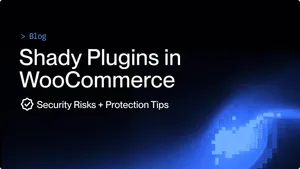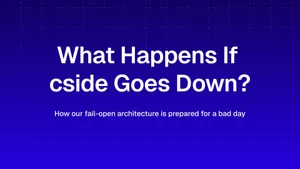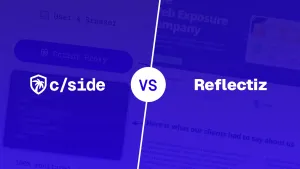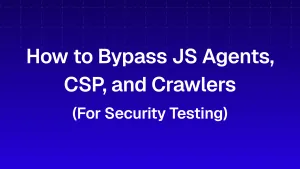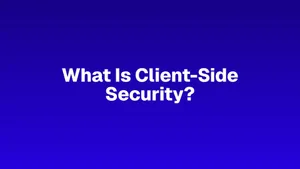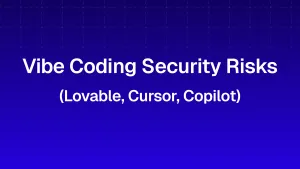This article takes an honest look at the features of Cloudflare Page Shield.
Since you’re on the cside website, we acknowledge our bias. That said, we’ve built our case honestly and based our analysis on publicly available information, industry information, and our own or our customers' experiences.
Some of the folks on the cside team have worked at Cloudflare and even contributed to the development of Page Shield. Even as a competitor in some areas, we hold Cloudflare in high regard.
If you want to verify their claims yourself, please navigate to their product pages.
| Criteria | c/side | Cloudflare Page Shield | Why It Matters | What the Consequences Are |
|---|---|---|---|---|
| Approaches used | Proxy | CSP + fetching script after | ||
| Real-time Protection | Attacks can occur between scans or in the excluded data when sampled | Delayed detection = active data breaches | ||
| Full Payload Analysis | Ensures deep visibility into malicious behaviors within script code itself | Threats go unnoticed unless the source is known on a threat feed | ||
| Dynamic Threat Detection | Identifies attacks that change based on user, time, or location | Missed detection of targeted attacks | ||
| DOM-Level Threat Detection | Tracks changes to the DOM and observes how scripts behave during runtime | Unable to identify sophisticated DOM-based attacks | ||
| 100% Historical Tracking & Forensics | Needed for incident response, auditing, and compliance | Needed for incident response, auditing, and compliance | ||
| Bypass Protection | Stops attackers from circumventing controls via DOM obfuscation or evasion | Stealthy threats continue undetected | ||
| Certainty the Script Seen by User is Monitored | Aligns analysis with what actually executes in the browser | Gaps between what's reviewed and what's actually executed | ||
| AI-driven Script Analysis | Detects novel or evolving threats through behavior modeling | Reliance on manual updates, threat feeds or rules = slow and error-prone detection | ||
| QSA validated PCI dash | The most reliable way to ensure a solution is PCI compliant is to conduct a thorough audit by an independent QSA | Without QSA validation, you rely entirely on marketing claims, which could result in failing an audit | ||
| SOC 2 Type II | Shows consistent operational security controls over time | Lacks verified security control validation, making it a risky vendor | ||
| PCI specific UI | An easy interface for quick script review and justification via one click or AI automation | Mundane tasks and manual research on what all the scripts do, which takes hours or days |
What is Cloudflare Page Shield?
Cloudflare Page Shield is a client-side security tool that monitors and analyzes third-party JavaScript running in users’ browsers. It helps detect malicious or unauthorized script changes by providing real-time alerts and visibility into the behavior of external dependencies.
How Cloudflare Page Shield works
Cloudflare Page Shield uses a crawler that fetches the script after the page has loaded. If a script changes or matches known malicious patterns, Page Shield will flag it and issue an alert. However, because the crawler fetches scripts independently, not in the context of a live user session. It cannot account for dynamically served payloads that vary based on cookies, user behavior, referrer headers, or other runtime conditions.
Attackers can also see the Cloudflare IP addresses and serve a non-malicious version of the script. This would not flag their detection mechanism.
Page Shield does not analyze every session. Instead, it samples traffic to optimize performance and reduce resource consumption. This approach makes sense from a cost perspective, but it also introduces severe blind spots in security monitoring.
To verify this, find a site that uses Page Shield, open your browser’s developer console, and refresh the page multiple times.
Page Shield leans heavily on Content Security Policies (CSP) to enforce script security. A CSP only trusts pre-approved script sources, not their content. Should the source stay the same but the content changes, like in the biggest client-side attack of 2024 – Polyfill – a CSP won’t catch it.
We wrote an in depth article on Why CSP Doesn’t Work in regards to providing the best client-side security solution:
CSP operates on an allow-list model, which permits resources from trusted domains but cannot block individual scripts or resources from those domains.
To our knowledge, Cloudflare Page Shield does store and analyze scripts. This means that once a script disappears from the monitoring window, there’s no way to retrieve it for future analysis and machine learning.
Finally, adopting Cloudflare Page Shield requires you to be an existing Cloudflare customer.
How cside goes further
Cside primarily offers a hybrid proxy approach which sits in between the user session and the 3rd party service. It analyzes the served dependencies code in real-time before serving it to the user.
This allows us to not only spot advanced highly targeted attacks and alert on them, cside also makes it possible to block attacks before they touch the user's browser. It also checks the box for multiple compliance frameworks, including PCI DSS 4.0.1. We even provide deep forensics, including if an attacker bypasses our detections. Allowing you to more tightly scope the size of the incident us to make our detection capabilities better every day. No other vendor has this capability.
We believe this is the most secure way to monitor and protect your dependencies across your entire website. We've spent years in the client-side security space before we started cside, we've seen it all, this is the only way you can actually spot an attack.
We also offer a free CSP endpoint on top of our product to allow for layering, it's included. With cside, you basically get the same thing as Report-URI on top for free.
Sign up or book a demo to get started.



